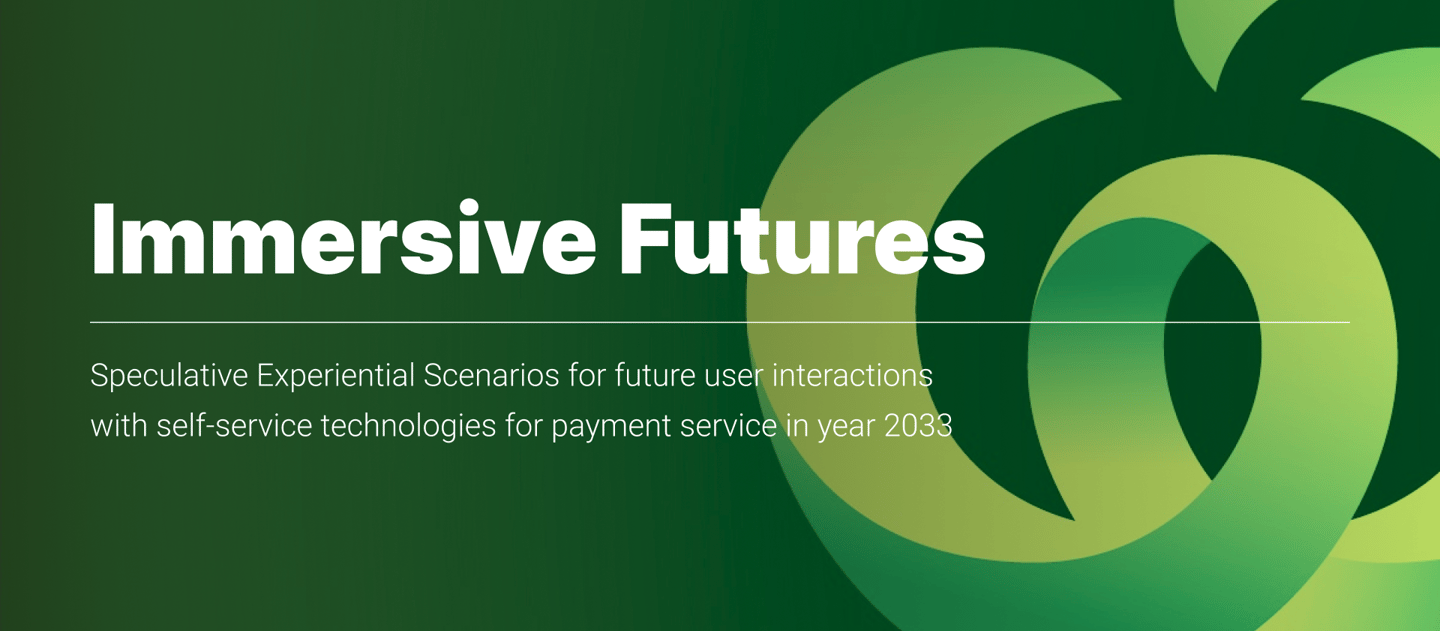

SCAN & GO SELF CHECKOUT
Woolworths is driving innovation in self-service technology as part of its 2033 vision for automation. Tasked with reimagining the future of user interactions, our design team explored how assisted checkouts, Scan & Go, and AI-powered counters can enhance the shopping experience. Through qualitative research and a Speculative Designapproach, we propose a smart self-service checkout—an autonomous system that streamlines the entire process from profile recognition to payment and rewards. This project envisions a seamless, user-friendly future for Woolworths' supermarkets.
Project Overview
Toolkit
My Role
Data collection - Surveys, Interviews & Observations, Data Analysis - Findings & Inferences, User Scenario, User Journey Map - Current & Future, Journey Map Analysis, Design Proposal.
Figma, Photoshop, Illustrator, Photoshop, After Effects, Adobe Aero(Beta).
(Research)
(Design)
Ideation, Aero Aero - prototype and animation, Voicing, Audio, After effects - background video, Physical prototype, User Testing, Design Presentation.
INSIGHTS
Rewards and discounts
Users appreciate rewards being automatically added during payment, avoiding extra activation steps.
Some users face issues where discounts don't appear during check-out, requiring staff assistance.
Users express a desire for simplified reward systems.
Perception of self-checkout technologies at Woolworths
Some users see little difference between Scan&Go and traditional self-checkout, as both involve scanning items.
Users wish for smoother, lag-free, and glitch-free motion in the self-checkout screens.Users generally like the current system but are open to more convenient technologies.
Users sometimes encounter inaccurate price labels, leading to concerns about pricing transparency.
Users find self-checkout suitable for a small number of items but frustrating for larger purchases, citing an average purchase of 20 items as an example.
Compulsive buying and Data trust
Some users are concerned about impulsive buying and overeating when items are automatically scanned.
Users generally trust corporations to use customer data responsibly.
Research Insights
Our approach centres on qualitative research methods inspired by the Design Ethnography approach, emphasising deep insights into participants' sensory and experiential aspects of daily life. We employ methods like observations, surveys, and in-depth interviews, utilising sensory tools like photography and audio recordings to collect data.
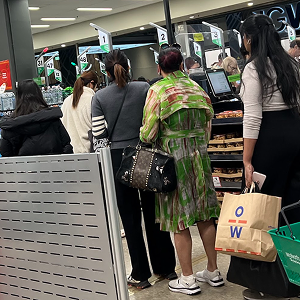
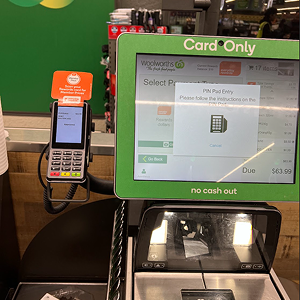
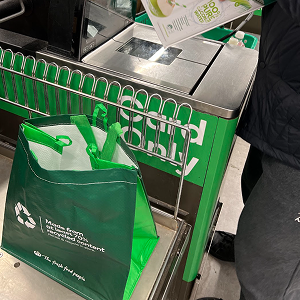
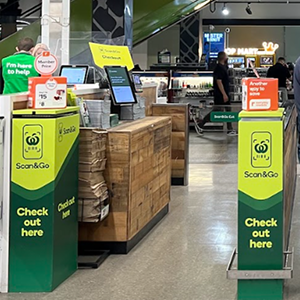
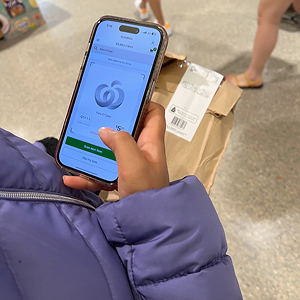
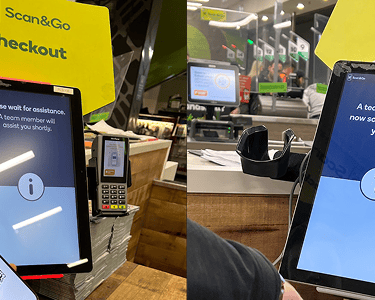
Self Checkout
Scan & Go
Challenges
Self-service checkouts at Woolworths face key challenges, including long queue wait times, limited kiosk availability, and restricted bagging space. These issues create bottlenecks, slow down transactions, and reduce overall convenience for customers, highlighting the need for a more efficient and user-friendly self-checkout experience.
Scan & Go faces challenges such as low user adoption, interruptions for security checks, and technological advancement. While it offers convenience, the requirement for periodic security verification and limited engagement hinder its efficiency and widespread use.
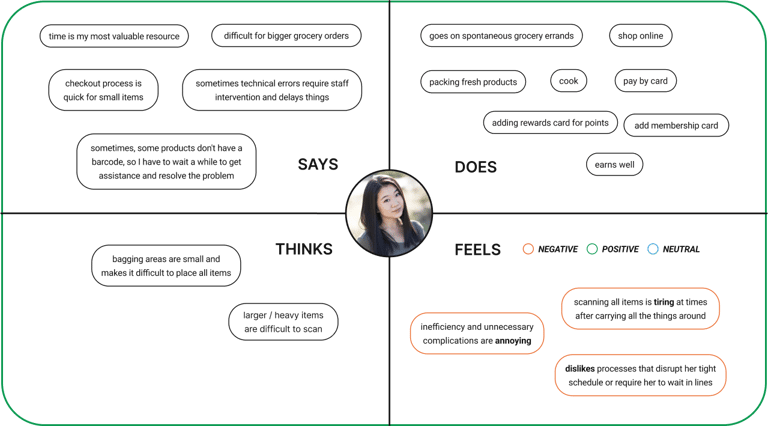

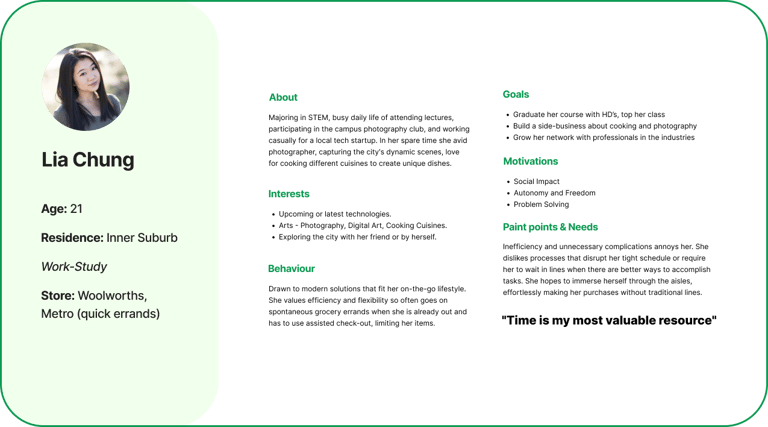

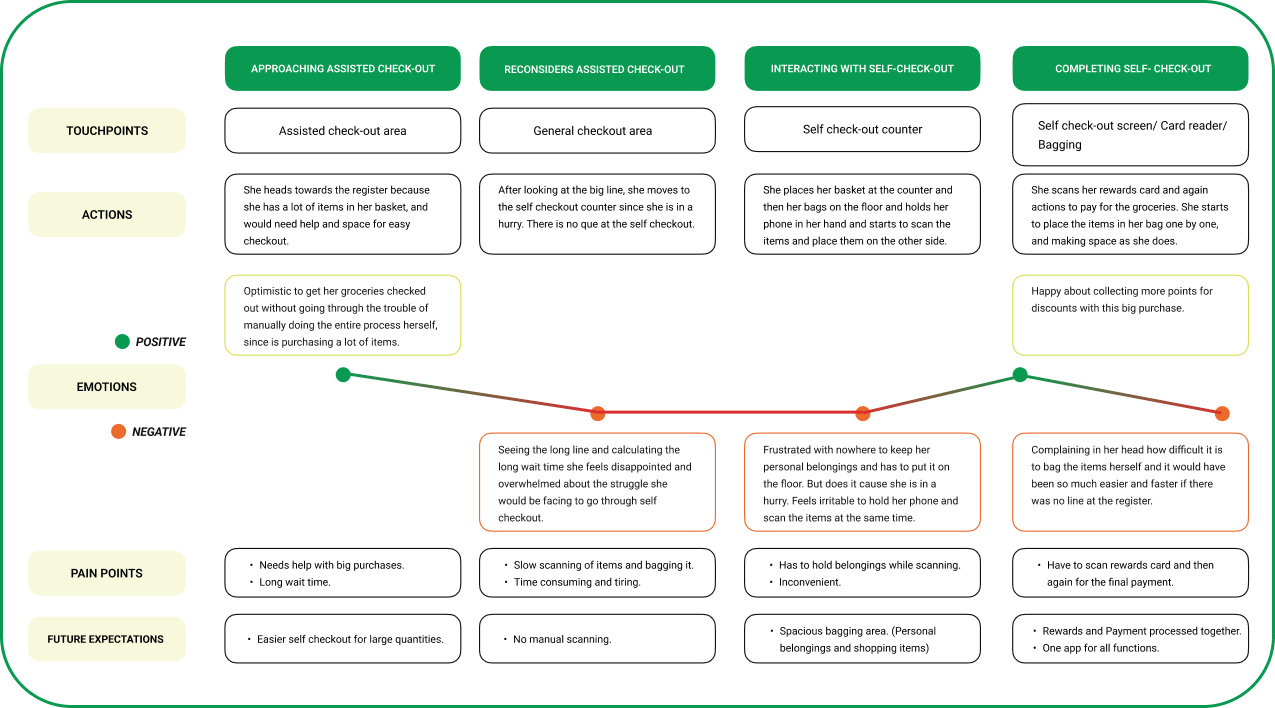

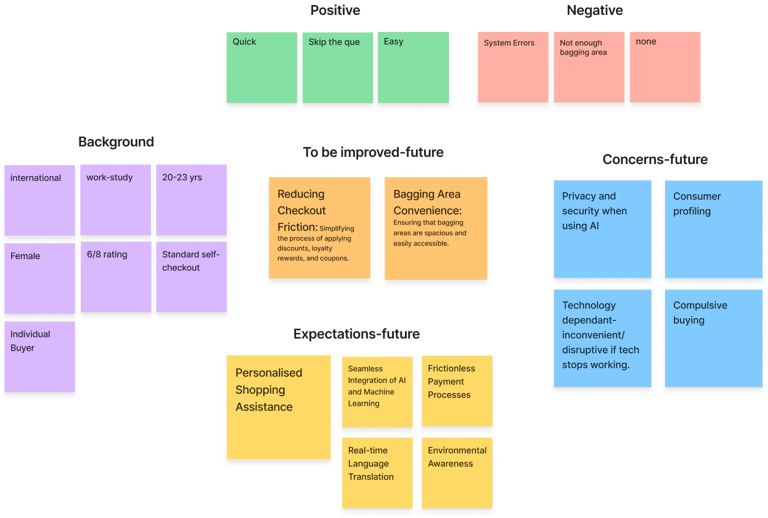

Affinity Map Findings & Inferences
User Scenario
Primary Persona
This persona is based on the combination of our common interviewees personalities and responses.
Current Journey Map


Our Proposal
Our affinity map findings highlight key user preferences for self-service technology, emphasising the need for a quick and easy checkout experience with minimal to no queues. Users value a spacious bagging area for convenience and expect error-free technology to ensure a smooth process. Additionally, there is a strong preference for ethical design and technology, reinforcing trust and accessibility. Lastly, personalised reward point collection enhances engagement, making the experience more rewarding for customers.
Lia has stopped by at Woolworths after her work, for a spontaneous purchase of her weekly necessities. She needs to buy things for her meal prepping, stock up on her pantry and weekly groceries, since she won’t get time again in the next few days due to her busy schedule.
She knows exactly where to find her items and heads towards the checkout since she has a lot of items in her basket.
Future Journey Map
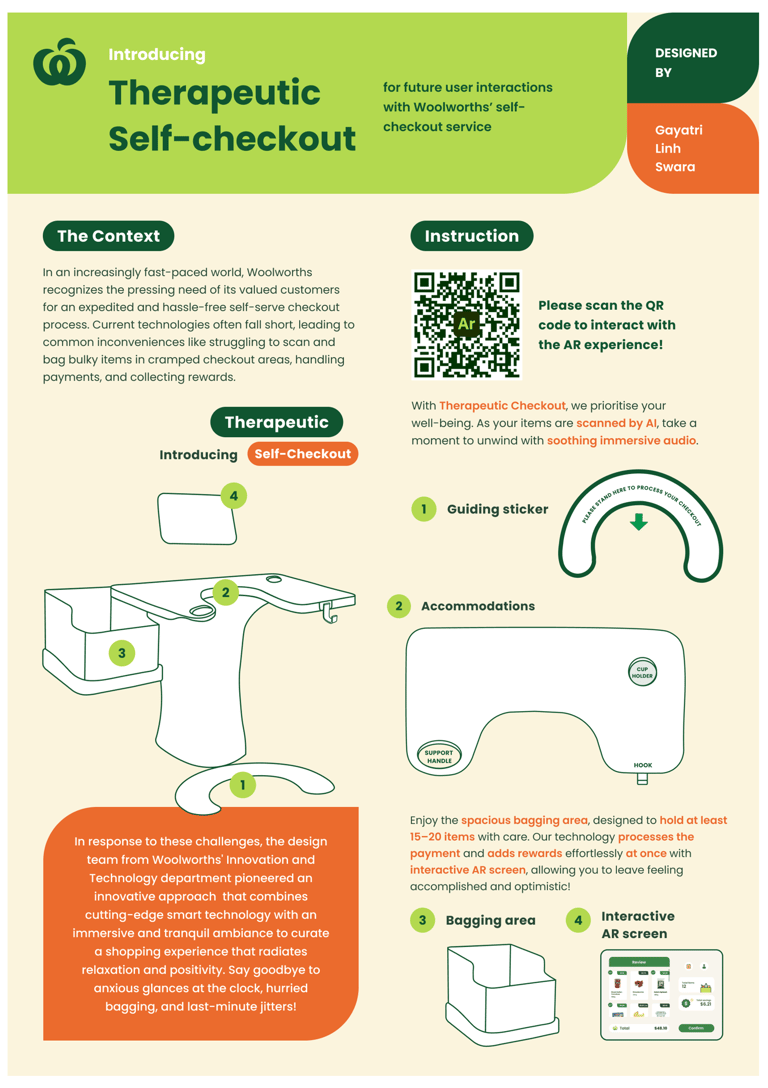

Combining the aspects of assisted checkout, scan & go check-out technology and smart ai-powered counters we present the following design solution for the problems discovered through this research.
Imagine a self-serving smart checkout counter with ample of space, deep enough to hold at least 15 - 20 items. It operates autonomously and effortlessly scanning the items and handling the entire process simultaneously such as: Profile --> Payment --> Rewards --> Exit.
